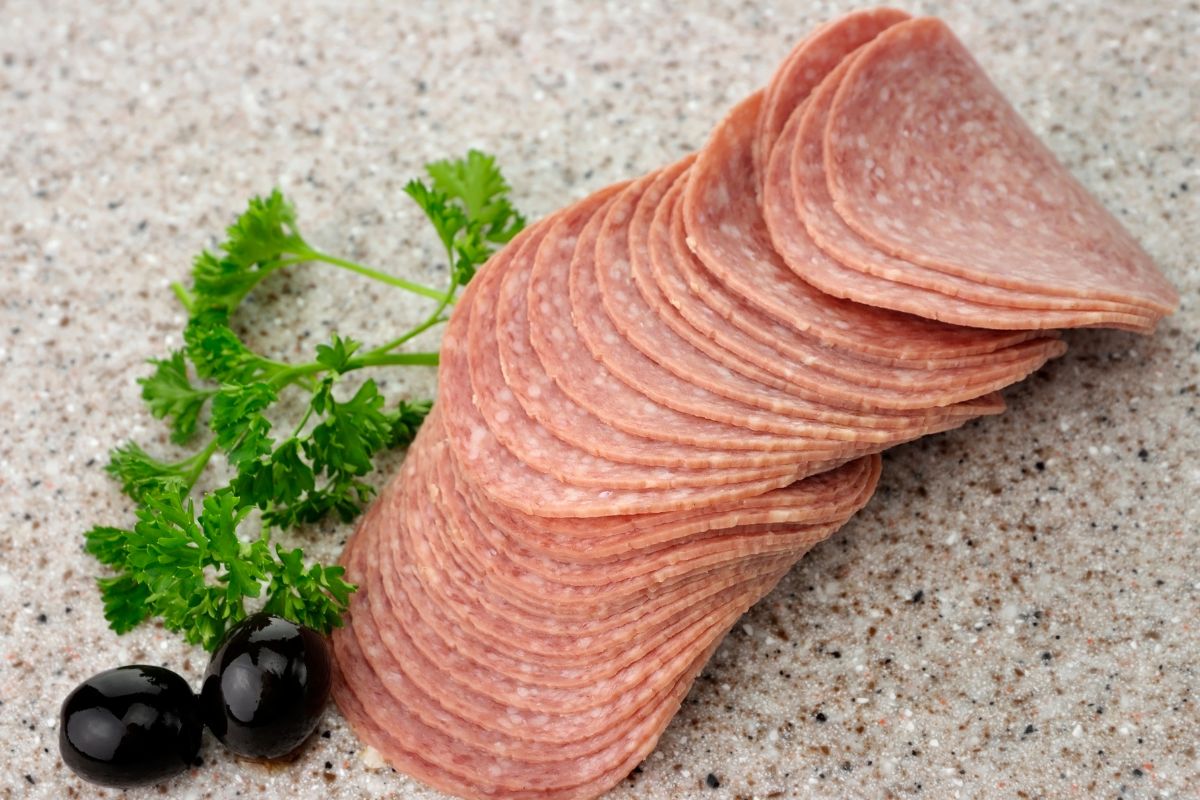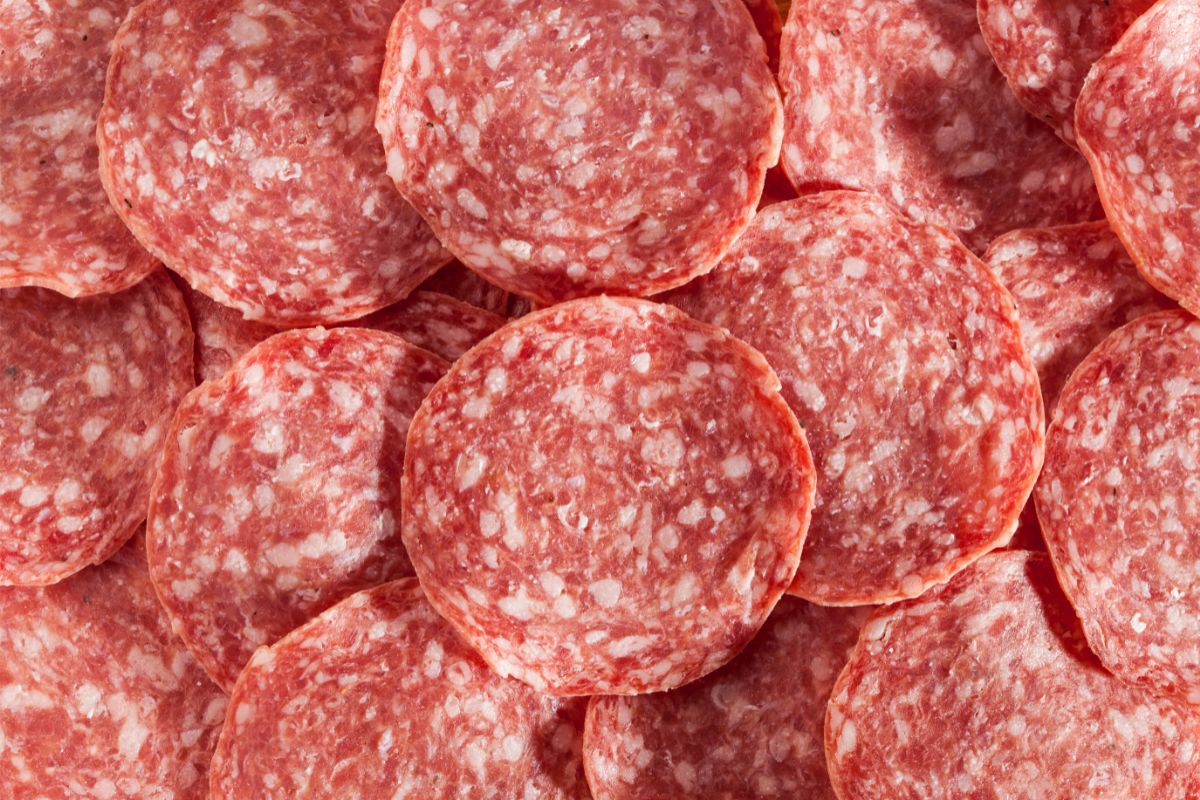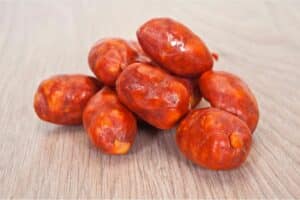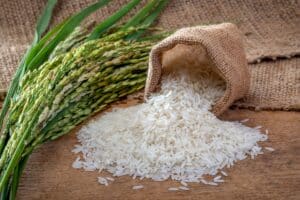Do you enjoy salami? If the answer is yes, have you ever wondered what the differences between hard salami and Genoa Salami are?

Well, depending on where you’re based or even where your local grocery store is located – these two types of salami can hold a lot of differences.
Whether this is determined by how they’re served or the ingredients that make them unique, understanding what makes these two types of meat different will ensure an enjoyable experience.
With this in mind, this guide will explore all the differences between hard salami and Genoa salami to help you determine which is the best for your given occasion.
Let’s get started.
What Is Salami?
Before we get started, did you know that there’s a difference between salami and pepperoni? Many people use these meats interchangeably without knowing this fact.
What makes them distinctive is their origins. Salami originated in Italy during Roman times. It is a type of cured meat that goes through an air-drying process – it can be enjoyed with cheese, pasta, or even inside a cocktail mix!
The sausage itself gets its name from the Latin word which means “salt” or “to salt”. This gives you an indication of what the meat tastes like: a combination of sweet with a kick of salt.
That said, depending on the variety of salami you purchase will significantly alter the flavor profile.
For instance, if you choose an original pork variety, then you’ll be provided with a more rich taste. On the other hand, beef has a deeper flavor.
Other varieties of salami include lamb, veal, and horse. The final taste is determined by additional herbs, these include thyme or basil, as well as oregano, cayenne peppers, or paprika.
Today, there are over 300 types of salami in the world and there is a chance you have tried at least one variety of salami.
Two popular types of salami include hard salami and genoa salami – two types of meat that are commonly mistaken for one another.
Below, we will take a look at all the differences you need to know about the two types of meat.
Hard Salami Origins
Originating in Central Europe, hard salami has been an incredibly popular food item for many years.
The manufacturing of hard salami combines a process of fermentation, drying, and curing the meat – which is usually beef or pork.
The curing process can take as little as several weeks or can last months. That said, this is an important step to develop the salami’s distinctive flavor.
Some popular types of hard salami include:
- Soppressata – This Italian salami variation is typically made with coarser cuts of meats and can be found in mild to hot types.
- Cervelat – Popular in Switzerland and Germany, this hard salami is a combination of beef and pork with a smooth texture.
- Hungarian Salami – As you might have guessed, this type of salami originates from Hungary. It can be easily identified by its medium to coarse texture with a mild garlic flavor.
Genoa Salami Origins
As its name suggests, genoa salami is a variety of salami that originated from Genoa, Italy. It has a similar production process to that of other salamis you would find in Europe, including fermentation, drying, and curing of the meat.
The main difference between Genoa salami and any other type of salami is the specific spices and seasonings used that provide the meat with a unique flavor profile.
Below, we have outlined some notable Genoa salami characteristics to help you distinguish the meat. These include:
- Compared to other types of salami, it has a finer texture.
- Flavorful blend of seasonings, such as red wine, garlic, and black pepper.
- Use of pork meat.
In short, both genoa salami and hard salami share origins in Europe – where hard salami can be found in Central Europe, and Genoa salami is found in Genoa, Italy.
While they share similar production processes, they are different in both their textures and seasonings – setting the two types of meat apart.
The Difference Between Hard Salami And Genoa Salami
In the U.S., “hard” salami often refers to a type of salami that is produced with smoked beef. As its name suggests, the meat is usually “hard”, stiff, and dry.
On the other hand, other varieties of salami – like Genoa salami – tend to be greasier and moisture.
As you can see, we already have a few key differences between the two types of meat. For example, hard salami is dry while Genoa salami is greasier.
Likewise, hard salami is typically made with beef while genoa salami is made with pork. In terms of taste, you can usually taste the smoke in hard salami. Conversely, genoa salami has a tartier taste (which may be the result of the wine).
Plus, you’ll usually find visible peppercorns in genoa salami while hard salami doesn’t contain any.
When it comes to determining which type of meat goes better than others, there is no fast or hard rule. If you like, you can even use both in the same sandwich!
Genoa salami tends to be sharper and more pungent while hard salami is subtle yet bold. Here, you can use hard salami to accent milder cheeses and other types of meat.
You can opt to eat genoa salami on its own or it goes delightfully with some mozzarella. From here, you can experiment with different combinations and flavors.
While genoa salami is the more typical choice when it comes to food pairings, both types of salami go great with a wide variety of foods.
Key Differences Between Hard Salami And Genoa Salami

- Texture – Thanks to its higher fat content, genoas salami tends to have a softer consistency. On the other hand, hard salami is firmer as a result of the smoking process.
- Shape – Hard salami is typically wide and short while genoa salami is generally narrow and long.
- Ingredients – Typically, pork is the main component of genoa salami, while you can find beef and pork in hard salamis.
- Flavor – Hard salami is more earthy with smoky hints thanks to the additional spices. Conversely, salami has a more intense flavor as a result of the added spices.
- Nutritional value – While both types of salami are high in cholesterol and fat, hard salami tends to contain slightly more protein, calories, carbohydrates, and sodium when compared to Genoa salami.
- Processing – Smoldering hardwood is used to smoke hard salamis – providing them with a unique texture and flavor. On the other hand, genoa salami is fermented and cured.
Below, we will explore each of these factors in further detail.
Base Ingredients
When it comes to salami, pork tends to be the most common choice. In particular, female pork since it tends to smell cleaner.
This is because male pigs, once they reach puberty, will exude an odor called boar taint. Therefore, it is not recommended when it comes to manufacturing salami.
Besides pork meat (which generally makes up 60%), you will also find fresh pork fat (40%) incorporated to create an additional depth of flavor.
The result is a nutty, rich, and amazingly moist piece of meat. This can be substituted for duck, sheep tail, or beef if you like.
Pork is generally used in genoa salami. That said, you can find veal and beef versions, too.
Alternatively, hard salami is composed of pork or a combination of pork and beef. Despite the meat not being cooked, it is perfectly safe to eat since it is cured.
Herbs And Seasonings
You can’t have salami without herbs and seasonings – it is comparable to a fish out of water! When it comes to herbs, the popular choice is oregano.
That said, you can opt to use alternative herbs, too. For instance, bay leaves, marjoram, thyme, etc, can be incorporated into the meat.
Alternatively, other species such as garlic and paprika can be used to enhance the meat’s overall taste.
Despite sharing a similar exterior appearance, when cut into slices, genoa salami tends to contain whole or slightly cracked peppercorns.
While hard salami typically contains ground pepper, as well as traces of white or red wine, too.
Apart from helping round out the overall taste, wine is used in starter culture to encourage the growth of healthy bacteria.
If you don’t want to waste your bottle of pinot noir, then you can simply choose to omit it from the recipe. You shouldn’t notice too much of a difference by leaving it out.
Manufacturing Process
When it comes to the process of creating salami, it is nothing but a labor of love. There are three different stages: preparation, fermentation, and drying. Let’s explore each one below in terms of hard salami and genoa salami.
Preparation
In the beginning stages, the meat is coarsely ground and combined with salt, sugar, herbs, pepper, and various other spices. It is then inoculated with yeast to help stabilize the development of the color.
In addition to this, it helps control acidification within an appropriate pH level as the meat ages.
Despite what you may think, the starter culture for salami isn’t made with yeast but with lactic acid bacteria – this is only incorporated when it is required from the particular cut of meat.
Here, the starter culture is needed for more than just fermenting the meat. Essentially, it helps to make sure harmful bacteria aren’t present, provides a distinct tangy flavor, and improves the consistency of the final product.
This starter is required for both hard and genoa salami in order to progress onto the next stage, fermentation.
Fermentation
Here, the meat mixture is added to a cylindrical casing which is then hung to dry in what’s known as the chamber.
Unlike cured genoa salami, hard salami requires an extra smoking process which is required to speed up fermentation. The result is a smoky finish.
The process typically takes between 48 to 96 hours.
Drying
Once the salami has gone through the fermentation process, it requires a dehydration process to hinder bacteria growth which can spoil the meat.
Nitrites or nitrates are sometimes implemented to preserve the final product’s color.
Texture
The name “hard” salami gives you an indication of what the overall texture is going to be like. Essentially, it has a dry, firm, and chewy texture due to the fact it has been smoked.
In addition, hard salami tends to have less fat when compared to genoa salami. Plus, it isn’t moistened using wine, either.
Despite genoa salami being considered a dry sausage, it has a greasy and softer texture as a result of its high-fat content – accounting for around 60-70% of the overall product.
As such, you’re more likely to notice flecks of fat in genoa salami as opposed to its counterpart.
Color
Depending on the proportion of meat you’re using, the color can vary from light pink to dark red.
Since salami is made using an uneven combination of beef and pork (with beef being the more popular ingredient), it creates a distinctive dark red color – one that resembles the color of red wine.
Final Thoughts
There are a ton of different salami varieties to choose from. Some of the most popular types include hard salami and genoa salami.
However, despite what you may think, these two types of salami aren’t the same. They both feature a unique flavor, texture, and color that sets them apart.
For starters, hard salami comes from central Europe while genoa salami is from the Italian region of Genoa. Their geographical location helps to influence these meat’s flavors and textures.
One of the most obvious differences between the two types of meat is that hard salami tends to be more dry, firm, and chewy as a result of its smoking process.
On the other hand, genoa salami tends to be softer and greasier as a result of the higher-fat content and the addition of wine to moisten the meat.







